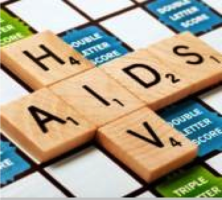
Anywhere I teach, I find that there are fewer teens and parents who are educated about HIV. Most of my students don’t even know what the acronyms “HIV” or “AIDS” represent.Just last week, I met a 24 year-old student who approached me at the end of a lecture to tearfully share that he was recently diagnosed with HIV. He wept in my arms.
It reminded me of my friend Larry who, a few days before he died of AIDS, grabbed the IV pole that was attached to his arm, infusing him with medicine, and pulled it toward his chest. He thought it was a person standing by his bed. He needed someone to hold.
We all need more HIV education and we all need someone to hold.
THE DEFINITION OF HIV AND AIDS
The acronym “HIV” stands for: Human Immunodeficiency VirusThe acronym “AIDS” stands for: Acquired Immunodeficiency SyndromeACQUIRED: One gets it, as opposed to it occurring naturally in one’s system.
IMMUNO: Refers to a protection in the immune system which fights off or defends us against unhealthy viruses, bacteria, germs and other disease‑causing micro‑organisms.
DEFICIENCY: A loss of this protection; implies that something is not working properly.
SYNDROME: A group of symptoms or physical signs that together indicate a disease or condition and in this case, define AIDS as a human pathology.
You don’t give AIDS.
You don’t get AIDS.
You don’t catch AIDS.
You don’t spread AIDS.
You don’t give it, you don’t get it, you don’t catch it, you don’t spread it.
You become INFECTED with or CONTRACT the virus (HIV or the HI‑virus) which can then sometimes, but NOT all times, LEAD to or PROGRESS to AIDS.
AIDS is not an organism that exists. It can not be seen under a microscope. It can not be grown in a Petrie dish. It can not be located in the blood. AIDS is a term that scientists and researchers coined in order to describe the phenomenon of what happens to the body after HIV succeeds in destroying the immune system. AIDS is a syndrome of many diseases, each resulting from an opportunistic agent or cancer cell or other infection that multiplies in humans who are immunosupressed because of a virus known as HIV.
THE FOUR FLUIDS
The four fluids that carry and transfer the virus are blood, semen, vaginal secretions and breastmilk. Not urine, not saliva, not mucous, not sweat, not tears, not vomit, not puss, not drool, not diarrhea, not spit, not anything but:
- Blood
- Semen
- Vaginal Secretions
- Breastmilk
For transmission of HIV to occur, one or more of these fluids must get into your bloodstream. Not on your clothes. Not on your fingers. Not on your sleeve. Not on your hands. Not on your skin. They must get into your bloodstream by way of a cut or tear in the skin or onto one of your torn mucous membranes.
Mucous membranes line body passages and cavities like your respiratory and digestive tracts and other internal organs. Mucous membranes also line passages and cavities that are open or exposed to the outside, protecting foreign particles or antigens from invading the body. According to scientists, researchers and AIDS service organizations, the mucous membrane must be torn, lacerated or have an abrasion for transmission and infection to occur. The variables are the amount of HIV and the length of time on the membrane. It’s risk reduction! You decide what’s best for you!
Always remember the equation:
DO NOT ALLOW
SOMEBODY ELSE’S
BLOOD, SEMEN, VAGINAL SECRETIONS AND/OR BREASTMILK
INTO YOUR BLOODSTREAM
OR
ONTO YOUR MUCOUS MEMBRANES
DISCLAIMER: The information contained in this post is intended to inform readers and is not intended to replace specific advice from a health care professional.

Leave A Comment